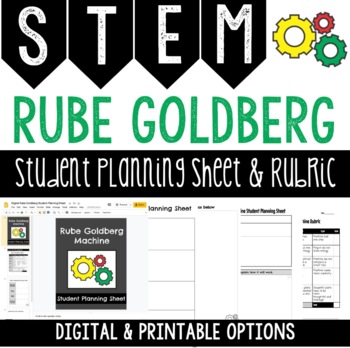Rube Goldberg Machine Planning Sheet & Rubric | Distance Learning Compatible
CuSTEM Made
19 Followers
Grade Levels
3rd - 8th
Subjects
Resource Type
Standards
NGSS4-PS3-4
NGSS4-PS3-3
NGSS4-PS3-2
Formats Included
- Zip
CuSTEM Made
19 Followers
What educators are saying
This is just what I was looking for but didn't have time to make! Easy to use and simple to understand.
I use this every.single.year! The kids LOVE the rube goldberg project and it's so nice to have a rubric ready to go
Description
Use this student planning sheet and rubric to guide and assess students. Printable and digital options available to allow for distance learning.
Includes
- Printable student planning sheet
- Digital student planning sheet using Google Slides
- Teacher rubric for independent project
- Teacher rubric for group project
Total Pages
Answer Key
N/A
Teaching Duration
N/A
Report this resource to TPT
Reported resources will be reviewed by our team. Report this resource to let us know if this resource violates TPT’s content guidelines.
Standards
to see state-specific standards (only available in the US).
NGSS4-PS3-4
Apply scientific ideas to design, test, and refine a device that converts energy from one form to another. Examples of devices could include electric circuits that convert electrical energy into motion energy of a vehicle, light, or sound; and, a passive solar heater that converts light into heat. Examples of constraints could include the materials, cost, or time to design the device. Devices should be limited to those that convert motion energy to electric energy or use stored energy to cause motion or produce light or sound.
NGSS4-PS3-3
Ask questions and predict outcomes about the changes in energy that occur when objects collide. Emphasis is on the change in the energy due to the change in speed, not on the forces, as objects interact. Assessment does not include quantitative measurements of energy.
NGSS4-PS3-2
Make observations to provide evidence that energy can be transferred from place to place by sound, light, heat, and electric currents. Assessment does not include quantitative measurements of energy.


